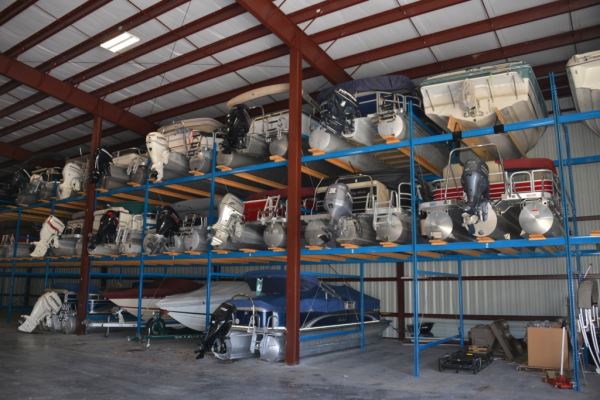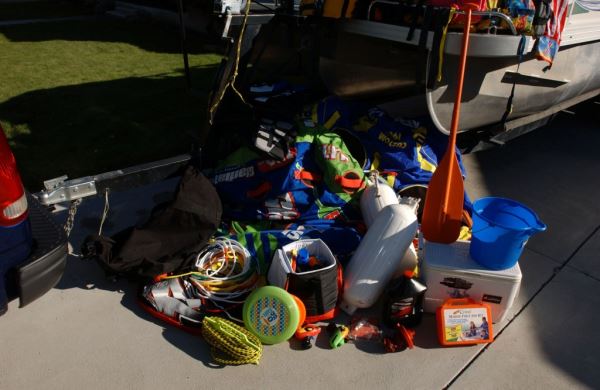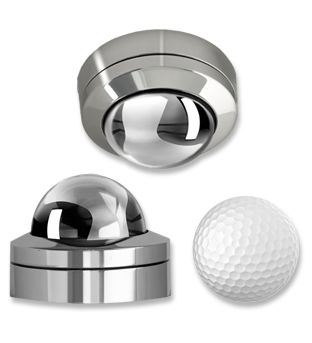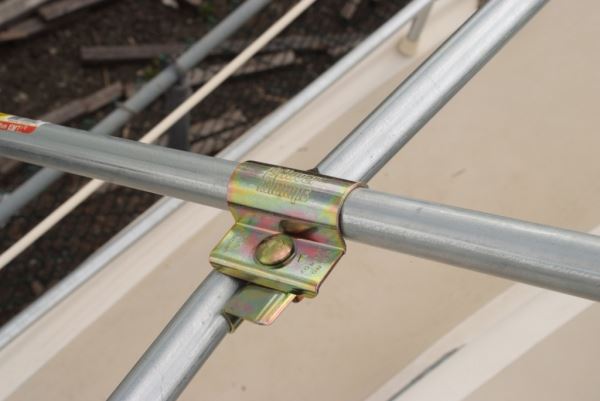
This article originally appeared in the Fall 2015 issue.
What steps would you take to keep your family safe? Would you keep them under lock and key? Replace all your windows with bulletproof Lucite? Install subcutaneous tracking devices on them so you knew their location at all times? Okay, those are all pretty outlandish, but some variant of each of those hare-brained ideas is available for keeping your pontoon or deck boat safe in the winter months. We covered how to winterize your boat in the last issue; now it’s time to figure out how to keep an eye on it when it’s cold out.
Running On Empty
Regardless of how or where you’re storing your boat, there are a few things you can do first that will make life a lot easier for you. After you’ve winterized it, there are still things to do. First, take everything off the boat: life jackets, garbage cans, registration papers, etc. Basically, anything that isn’t bolted down should come off. If nothing else, this step will let you take inventory of your boat’s contents so you know where everything is and if you’re missing anything for next season. In the case of your title and registration, it’s a great idea to keep those off the boat in the event of a theft, so you can prove your ownership after the fact.

Don’t Fuhgettaboutit
Obviously, the main thing you need to do over the winter is constantly check on your boat. Come up with a schedule that you’re comfortable with, and stick to it. You already do regular maintenance checks anyway (right?) so just translate those checks into is-my-boat-still-afloat-and-not-at-the-bottom-of-a-lake checks. Whether it’s docked, dry-docked, or physically in storage somewhere, constant attention is a must. But what if it’s far away or you just simply can’t be bothered to go check on it yourself?
Don’t Be Camera Shy
What’s the easiest way to keep track of something when you’re not physically present to keep watch over it? If you said, “Well, a security camera, I guess,” congratulations, Captain Obvious. If you said telepathy or something equally absurd, congratulations: the asylum is now accepting new patients. If you said, “Send one of my lackeys,” you have better foresight than I, so, uh, congratulations? Anyway, the point is that security cameras are a good way to keep an eye on things down at the marina (which would be good year-round) or at your storage facility of choice. Luckily, cameras are pretty easy to come by these days, for not (necessarily) a lot of money.
One company that has the needs of boaters squarely in mind is Global Ocean Security Technologies (GOST). They offer a wide range of devices that make keeping track of your boat easy. From GPS trackers to wireless camera monitoring, their products will let you keep an eye on your boat from a distance and notify you at a moment’s notice of any foul play. (www.gostglobal.com)

If you’re lucky enough to live in a warmer climate where leaving your pontoon at the marina is a viable option, do what you can to make sure the marina is well-lit and has its own cameras. If it doesn’t, that may be out of your hands, but you could try to rally support from others on your dock to convince the marina to install them. As ever, that takes time, so in the meantime, it’s on you to be vigilant.
Wrap It Up
What if you just keep your boat at your house or some other off-site location during the winter? It may sound like a joke, but seriously, watch out for raccoons. Eleanor Roosevelt may have kept one as a pet, but any home owner can tell you what a nuisance they are, especially when it comes to them rooting around where they don’t belong, like, say, your trash cans or under your boat cover. Many a boat has been torn up beyond recognition due to an overzealous gaze of raccoons. (That’s the word for a group of raccoons. Seriously.)
So how do you keep the critters at bay? A dog would probably help. But you can also shrink wrap your boat while it’s in storage. Shrink wrapping can be a DIY project, although it does lean a little more to the professional side of things, especially if you’ve never done it before. Companies like Dr. Shrink (www.dr-shrink.com) and Pro-Tect (www.shrinkwrapboats.com) offer tools and supplies for purchase or rental if you decide to tackle it yourself. Be warned: it’s a pretty involved process that’ll require the help of multiple people. Plus, all the components you need can be expensive, so make sure it’s something you’re going to do every year before you commit. You also will have to dispose of the wrap in the spring, so that’s another consideration.

One alternative to shrink wrapping is a company called Kover Klamps (www.koverklampframes.com). They make custom clamps that secure pieces of conduit into a frame. The conduit that Kover Klamps recommends is 3/4-inch inside-diameter "EMT" thin-walled conduit, which is something you can pick up on your own from any hardware store. That frame goes around your boat and you attach one of their custom covers to it. The covers they sell are durable and designed to last the life of the boat. Once the frame is assembled, they use a custom color-coding system to mark where each piece goes so that subsequent assemblies go smoothly. Then you can store the frame and cover for future use.
On The Trail(er)
Finally, if your boat is trailered, it’s a good idea to chain up the trailer so some ne’er-do-well can’t just hook onto it and drive off. Also, you can turn the trailer around so the tongue is away from the street (or whatever the point of ingress is).
If none of these options works for you, there are companies and services out there that offer heated boat storage in the winter months. They’re going to be pretty localized, though, and will probably only accept local boats, so do some digging and see if there are any in your neighborhood. Typically, they’ll offer features like 24-hour security, temperature alarms, backup generators, and lifts to move your boat around.
Now’s the time to start making your winter plans. You don’t want to be caught standing on the dock when you pull your boat out, scrambling to come up with a storage plan. Any of these options (or some combination thereof) will help set your mind at ease while you’re weathering the ravages of winter.

